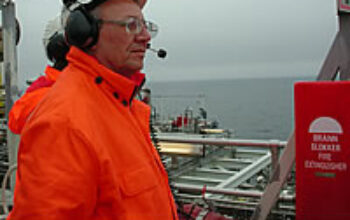In the annals of contemporary scientific inquiry, few phenomena have captured public attention and scrutiny as the Bubble Fusion Scandal. This event, marked by allegations of dubious experimental integrity, has incited fervent debate within and beyond academic circles, raising pivotal questions regarding the intersection of ambition and ethics in scientific research. What constitutes sound scientific practice, and to what extent can the allure of groundbreaking results compromise fundamental research tenets?
The saga began when a group of physicists, led by an ambitious researcher, claimed to have achieved bubble fusion—a process wherein the implosion of gas bubbles in a liquid generates sufficient heat and pressure to induce nuclear fusion. This assertion could have revolutionized energy production, promising a clean, nearly limitless source of power. The prospect of harnessing such extraordinary energy captivated not only the scientific community but also global stakeholders invested in renewable energy technologies.
However, the exuberance surrounding these claims soon transformed into skepticism. Critics emerged almost immediately, questioning the validity of the experimental methodology employed. Peer review, a cornerstone of scientific resilience, became a battleground for disputes. Allegations of design flaws, insufficient controls, and improper data interpretation surfaced, leading to heightened scrutiny from both experts and laypersons alike. The initial validation of results, which had sparked widespread excitement, quickly devolved into a crucible of doubt and dissent.
One pivotal aspect of the scandal revolves around the ethical imperative of transparency in research. The researchers involved faced accusations of obfuscating data and selectively presenting results to bolster their claims. In what ways does this compromise the foundational integrity of scientific discourse? Science is inherently a communal endeavor, reliant upon the veracity of its practitioners. When individuals prioritize personal accolades over collective advancement, the repercussions can ripple through entire fields. This incident enkindles a broader inquiry into the nature of scientific progress: does the end justify the means?
The ensuing fallout was nothing short of catastrophic. Repercussions were swift and severe, not merely for the researchers but for the institutions that supported them. Academic reputations, often painstakingly built over years, crumbled. Funding bodies withdrew financial support, casting a lengthy shadow of uncertainty over associated research initiatives. The disillusionment felt across the scientific landscape begs an important inquiry: how can the academic community safeguard against such ethical breaches while nurturing innovation?
Moreover, the Bubble Fusion Scandal serves as a cautionary tale about the pressures inherent in scientific exploration. The race for funding, recognition, and the desire to contribute to monumental breakthroughs can blur the lines of ethical conduct. The pursuit of knowledge is a noble endeavor; yet, the temptation to circumvent rigorous standards can emerge, especially when stakes are perceived to be extraordinarily high. The challenge for institutions and individuals lies in fostering an environment where integrity is prioritized over sensationalism.
The narrative further intensifies when considering the role of media in shaping public perception of scientific issues. The early coverage of the bubble fusion claims, characterized by sensationalist language and a lack of scrutiny, likely exacerbated the initial response from the scientific community. Journalists, captivated by the prospect of groundbreaking advancements, often overlook the critical importance of methodological integrity in their pursuit of captivating stories. In what ways, then, can science communicators balance the dissemination of transformative discoveries with the obligation to report responsibly?
As the dust began to settle, it became evident that the implications of the scandal extended far beyond the immediate players. The discourse around peer review processes, funding allocation, and the importance of ethical standards gained momentum. Institutions began to reevaluate their oversight mechanisms, recognizing the crucial need for robust frameworks that would discourage unethical practices and promote accountability. This necessitates a reevaluation of current practices: what reforms can or should be implemented to reinforce the integrity of scientific research?
The Bubble Fusion Scandal, while distressing, prompted a reckoning that many in the academic community deemed necessary. Efforts to restore confidence in research methodologies were initiated, leading to enhanced training in research ethics and a push for transparency in publishing and data sharing. The movement toward open science emerged as a viable solution, aiming to democratize access to scientific knowledge while simultaneously upholding rigorous standards.
Ultimately, the Bubble Fusion Scandal encapsulates the complex interplay of scientific aspiration and ethical responsibility. It challenges us to reflect upon our values as a community devoted to the pursuit of knowledge. While the allure of breakthrough discoveries remains a driving force, it is imperative that the scientific enterprise upholds its commitment to integrity. Such a commitment not only preserves the sanctity of research but also safeguards the future of innovation itself.
In conclusion, as we navigate the intricate landscape of modern science, the Bubble Fusion Scandal serves as a poignant reminder of the perils that accompany ambition. It engenders an imperative dialogue about the nature of scientific endeavor, the ethical responsibilities bestowed upon its practitioners, and the delicate balance between innovation and integrity. How can researchers, institutions, and communities cultivate an environment that celebrates discovery while unwaveringly endorsing ethical rigor?








